Modified Bitumen Roofing: A Complete Guide
August 9th, 2023 | 9 min. read
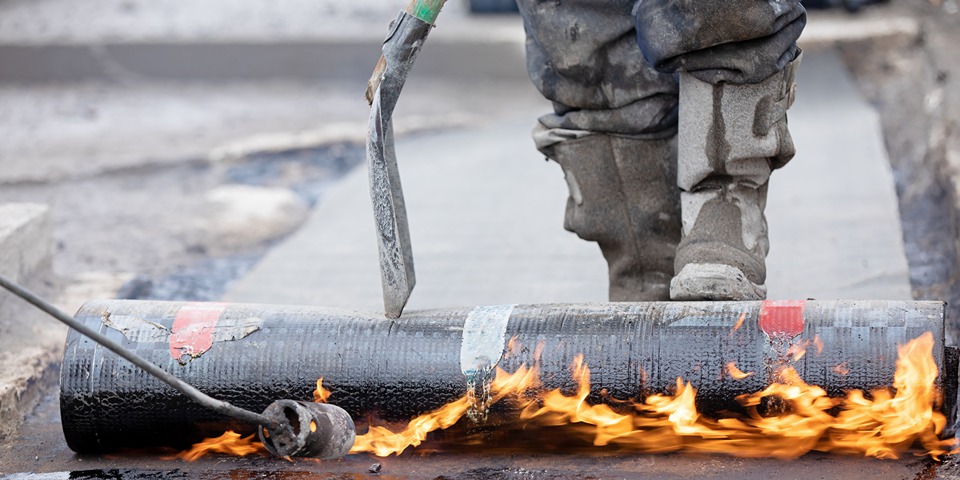
If you’re in the market for a roof repair or replacement, you may have heard of modified bitumen roofing. Maybe you have a “mod bit” system already or maybe a contractor you talked to raved about it.
But what is modified bitumen? If you have a modified bitumen roof, should you keep it? If your contractor is suggesting one, should you install it?
At GIDEON, we’ve installed millions of square feet of every kind of roof system over the last 20 years, including modified bitumen. In this article, we’ll answer all of the big questions about this system, including how it’s made, how it’s installed, its pros and cons, its lifespan, and how it stacks up against other roofing systems.
By the end of this, you’ll be armed with the knowledge you need to make an informed decision about this time-tested roofing system.
Let’s dive in.
Table of Contents
- What Is Modified Bitumen Roofing
- Types of Modified Bitumen Roofing
- Installation Methods
- Adhesion Methods
- Pros and Cons
- Maintenance and Lifespan
What Is Modified Bitumen Roofing?
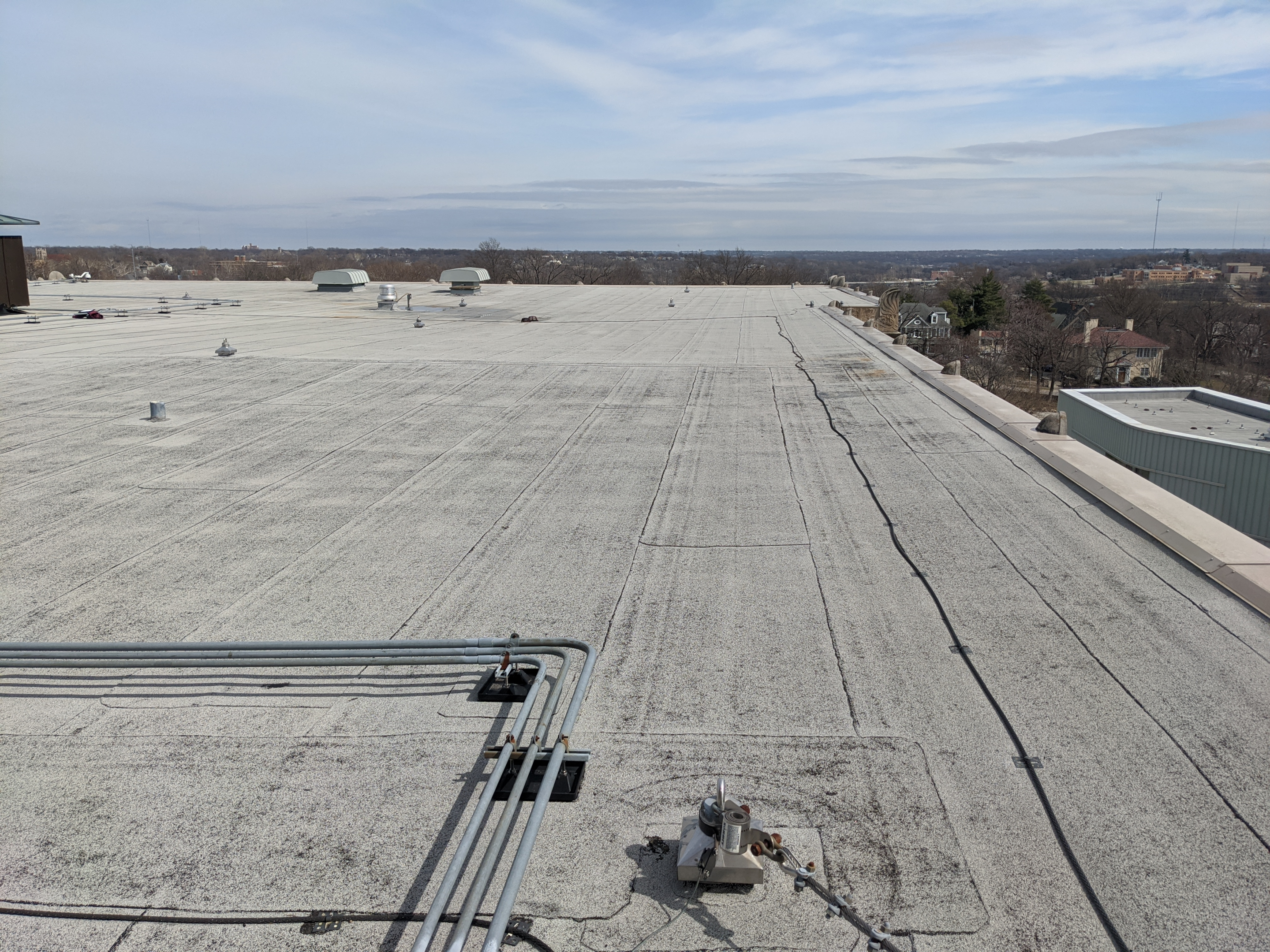
A modified bitumen roofing system, often referred to as a "mod bit" roofing system, is designed for low-slope or flat roofs. Introduced in the 1960s in Europe, modified bitumen roofs were a modern upgrade to the old built up roofing systems (BUR) that had been popular since the 19th century. In a built up roof system, hot asphalt is mopped onto the roof in multiple layers. While this system is tough and extremely waterproof, it is also messy, smelly, and very difficult (even hazardous) to install, repair, and tear off.
Instead of hot-mopping asphalt onto the roof, modified bitumen roofing systems are fabricated by the manufacturer into flexible sheets that can be rolled out onto a roof. They take asphalt, combine it with polymerized rubber or plastic, and reinforce it with fiberglass, which creates a tough but flexible asphalt sheet.
These pre-formed modified bitumen membranes solved the problems associated with BUR systems, and, by the 1980s, had made their way from Europe to North America, where they have continued to be a popular choice ever since.
Types of Modified Bitumen Roofing
Modified bitumen roofing consists of two primary categories, each engineered for distinctive features: Styrene-Butadiene-Styrene (SBS) and Atactic Polypropylene (APP). Both types, while sharing the fundamental properties of modified bitumen roof systems, cater to different demands and environments.
SBS (Styrene-Butadiene-Styrene) Modified Bitumen
The SBS variant of modified bitumen roofing owes its distinguishing properties to the inclusion of SBS, a rubber elastomer, which makes the mod bit sheet flexible. This allows it to expand and contract as temperatures fluctuate, mitigating the risk of cracking.
SBS modified bitumen can be compared to a rubber band, which can stretch to many times its original length and then return to its initial state once the force is released. This quality gives SBS an advantage in areas prone to extreme temperature swings or where a lot of roof movement is expected.
The versatile installation methods for SBS roofing are another asset. Installers can use hot asphalt, cold adhesive, or heat welding, providing flexibility based on the project's requirements and the environmental conditions.
APP (Atactic Polypropylene) Modified Bitumen
APP modified bitumen roofing (Atactic Polypropylene) is reinforced with plastic polymers, rather than rubber. This plastic reinforcement results in a roofing material that boasts enhanced resistance to aging and destructive UV rays. APP-modified bitumen exhibits superior performance in hot climates, but it does not handle movement as well as SBS and is more prone to cracking.
APP is most commonly installed using the torch down method (in which an installer applies an open flame to the bottom of the sheet to adhere it to the substrate), but 'peel-and-stick' versions are also available. Despite being less flexible than SBS, APP roofs are still resistant to wear and tear, making them a robust choice.
Installation Methods of Modified Bitumen Roofs
Installing a modified bitumen roof system correctly is key. It involves careful planning, precision, and an understanding of the characteristics of the material.
Preparation
Before the installation begins, the existing roof surface needs to be completely cleaned and cleared of any debris. Any old roofing material should be removed, and the roof deck should be inspected for damage. Any damaged sections should be repaired or replaced. The roof deck should be dry and structurally sound.
Insulation (optional)
Depending on the specific project, a layer of insulation may be installed on the roof deck before the roofing material. This layer of insulation can help improve the building's energy efficiency. The insulation is often fastened to the roof deck using special insulation fasteners.
Base Sheet Installation
A base sheet or ply is then fastened to the roof deck. This layer is usually made of fiberglass or polyester and provides a secure surface for the bitumen to adhere to. The base sheet also serves as an additional layer of protection for the building.
Modified Bitumen Sheet Installation
Next, the modified bitumen sheet is installed. In most cases, just one cap sheet is installed. The method of installation depends on the type of bitumen. For APP modified bitumen, the torch-down method is often used, which involves heating the underside of the bitumen sheet with a torch as it is rolled out, which liquefies the asphalt, allowing it to bond to the base sheet. For SBS modified bitumen, the sheets might be hot-mopped (using hot asphalt), cold-applied (using adhesive), or self-adhered (peel-and-stick).
Seam Sealing
Regardless of the application method, the seams between each sheet need to be sealed to prevent leaks. This can be done by overlapping the edges of each sheet and then applying heat (for torch-down or hot-mopped methods), adhesive (for cold-applied methods), or pressure (for self-adhered methods).
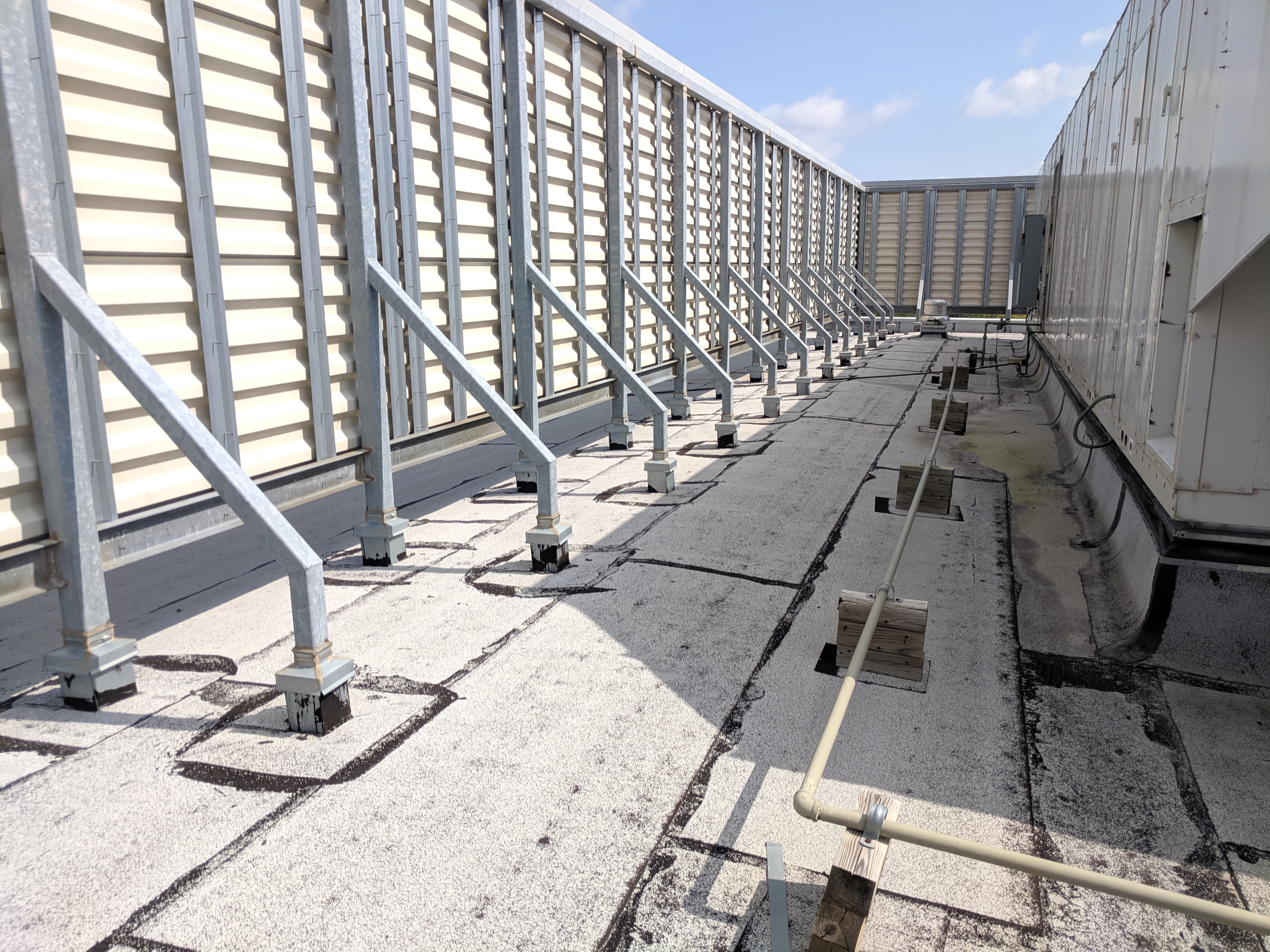
Top Layer
After the bitumen layers are installed, a top layer or surfacing is often applied for additional protection against weathering and UV radiation. This could be a layer of gravel or mineral granules, or an elastomeric coating.
There are four different methods for adhering a modified bitumen roof system:
Torch Down Method
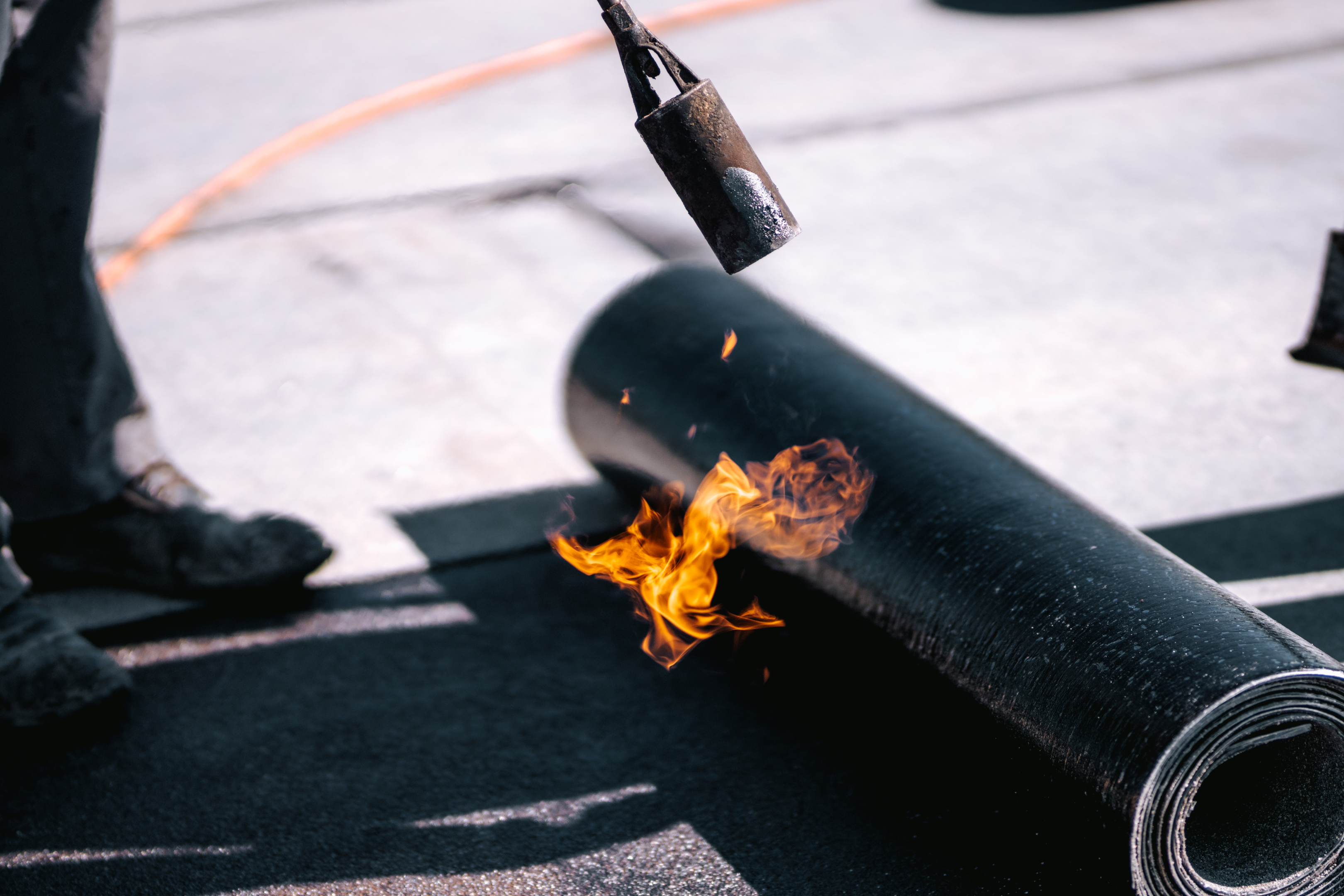
The torch down method is predominantly used for installing APP modified bitumen due to the product's thermoplastic properties. In this method, the underside of the roofing material is heated using a propane torch, melting the bitumen as it's being unrolled, thus allowing it to bond with the substrate.
This technique requires a skilled installer to manage the heat application accurately. While efficient, this method involves open flames and carries an inherent fire risk, demanding proper safety precautions during installation.
Self-Adhesive Method
Self-adhesive modified bitumen sheets come with a pre-applied adhesive layer protected by a removable film. During installation, the release film is peeled back, and the sheet is rolled onto the substrate, and pressed into place. This method eliminates the need for open flames or hot asphalt, reducing fire hazards and making it a safe choice for occupied buildings.
However, environmental conditions can affect the adhesive quality, requiring ideal weather conditions for the best results.
Cold Adhesive Method
The cold adhesive method involves applying a specially formulated adhesive to the substrate with a squeegee or a roller before laying down the modified bitumen sheets. Once the adhesive is sticky, the sheets are rolled out onto the roof surface.
This method is typically used for SBS modified bitumen systems, offering an excellent balance between safety and adhesion. However, the adhesive can take time to cure, and the installation may not be suitable for damp or cold weather conditions.
Hot Asphalt Method
The hot asphalt method is a traditional technique often used with SBS modified bitumen. The asphalt is heated in a kettle until it reaches a liquid state, then applied to the roof substrate. The modified bitumen sheets are rolled into the hot asphalt, which adheres to the sheets as it cools and solidifies.
This method provides a highly durable and waterproof roof but does involve the handling of hot materials. Therefore, this method should only be undertaken by experienced roofing professionals following safety protocols.
Pros and Cons of Modified Bitumen Roofs
Every roofing system comes with its unique set of advantages and drawbacks, and modified bitumen roofs are no exception. Understanding these pros and cons is crucial in determining if this roofing type is the right fit for a specific building or project.
Advantages
Durability
One of the main strengths of modified bitumen roofs is their resilience. Asphalt is extremely tough and resistant to physical damage, whether it's from foot traffic or falling debris, making it an excellent choice for roofs with heavy equipment or those requiring regular maintenance. Moreover, the multiple plies add redundancy; if one layer is punctured, the other layers will prevent leaks.
Weather Resistance
Modified bitumen roofs are known for their superior weather resistance. They can withstand extreme temperatures, resist UV rays, and hold up well against wind and hail.
Flexibility
Thanks to the added polymers, these roofs exhibit enhanced flexibility, reducing the risk of cracks and leaks, particularly in colder climates where more rigid materials might fail.
Ease of Repair
Should a modified bitumen roof become damaged, repairs are generally straightforward and inexpensive. This aspect contributes to the roofing system's overall lifecycle cost efficiency.
Potential Problems with Modified Bitumen Roofs
Installation Sensitivity
While not overly complicated, the installation of modified bitumen roofing does require a certain level of expertise to ensure a watertight seal and optimal performance. If using the torch down method of application, for example, installers can heat the membrane too much, causing a loss of granules. You can see this in the image below, in which the black asphalt has become exposed.
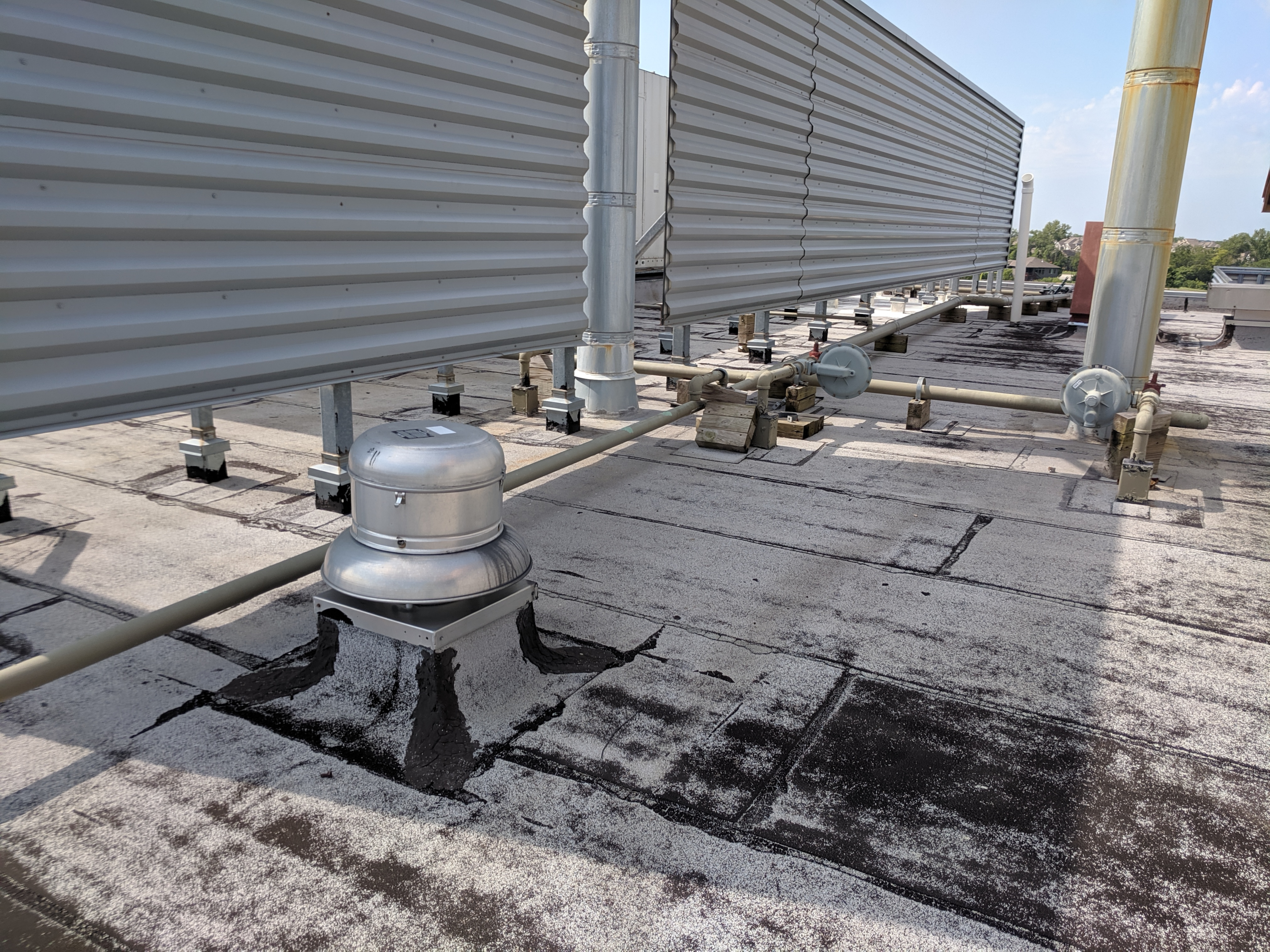
Aesthetics
While functional, modified bitumen roofs may not be the most aesthetically pleasing option available. While they come in different colors, they tend to look fairly weathered over time.
Heat Absorption
Unless coated with a reflective material, modified bitumen roofs can absorb a significant amount of heat due to their dark color, potentially increasing cooling costs during summer months.
In sum, modified bitumen roofs present a balance of durability, weather resistance, and cost-effectiveness, but they do require professional installation, and their aesthetic appeal and heat absorption characteristics might not suit all circumstances. As with any roofing system, these pros and cons should be considered within the context of the building's specific requirements and long-term objectives.
Maintenance and Lifespan of Modified Bitumen Roofs
The longevity and performance of a modified bitumen roof depend not only on its installation but also on its ongoing care and maintenance. With the right upkeep, these roofs can deliver lasting value and durability. Here's what you need to know:
Routine Maintenance Tips and Recommendations
To maintain a modified bitumen roof and prolong its lifespan, routine inspections and maintenance are crucial. Conduct visual inspections at least twice a year and after major weather events. Look for signs of surface wear, granule loss, blisters, cracks, and punctures. Also, check for pooling water, as it can stress the roof structure and lead to leaks.
Life Expectancy of a Modified Bitumen Roof
Modified bitumen roofs, when well-maintained, can last anywhere from 20 to 30 years.
The Upshot
Commercial roofing decisions are no walk in the park - with so many options and so much variety in the quality of commercial roofing contractors, making the right decision is complex and fraught with challenges. Hopefully, in this guide, we've made that decision a little bit easier by giving you the low-down on modified bitumen roofing systems.
For more customized advice, schedule a free call with us. Our nationally-recognized roofing experts can offer you personalized guidance on your roofing project, so you can get the job done right.
Schedule a Free Call
Hop on a call with a GIDEON expert and learn more about how GIDEON can help you with your commercial roofing project.
Eric Schlossenberg started roofing when he was 24 years old, when he went to work as a Conklin contractor. Over the course of his career, he’s installed hundreds of thousands of square feet of roofing systems, but he still has a special passion for where he started in roof foam and coatings, and is a founding member of The Roof Coaters Guild of America. Gregarious and outgoing, Eric brings a unique sense of fun to his work, whether he’s on a roof or in the office.
